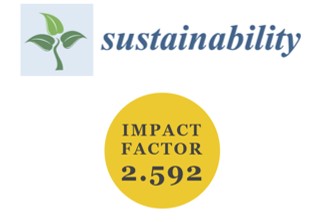In this paper, multispectral and multi-temporal satellite data were used to assess the spatial and temporal evolution of the agriculture activities in the Al-Jouf region, Kingdom of Saudi Arabia (KSA). In the current study, an attempt was made to map the agriculture sprawl from 1987 to 2017 using temporal Landsat images in a geographic information system (GIS) environment for better decision-making and sustainable agriculture expansion. Our findings indicated that the agriculture activities developed through two crucial stages: high and low rise stages. Low rise stages occurred during three sub-stages from April 1987 to April 1988, from September 1993 to August 1998, and from April 2008 to May 2015, with overall change rates of 37.9, 44.4, and 30.5 km2/year, respectively. High rise stages occurred during three sub-stages from April 1988 to February 1993, from September
2000 to March 2006, and from April 2016 to August 2017, with overall change rates of 132.4, 159.1, and 119.5 km2/year, respectively. Different environmental problems due to uncontrolled agriculture activities were observed in the area, including substantial depletion of the groundwater table. Another environmental impact observed was the appearance of sinkholes that occurred suddenly with no warning signs. These environmental impacts will increase in the future if no regulated restrictions are implemented by decision-makers.


